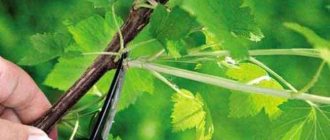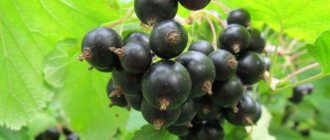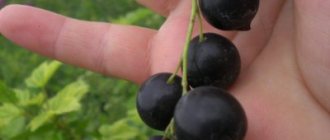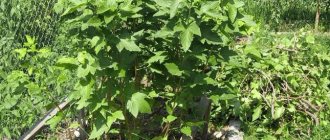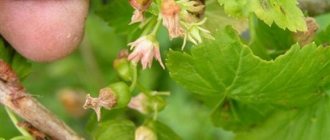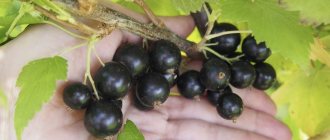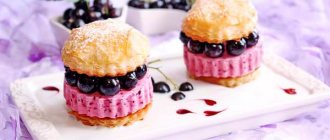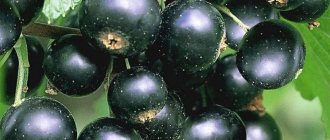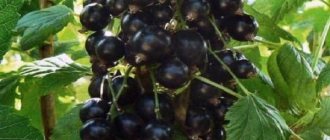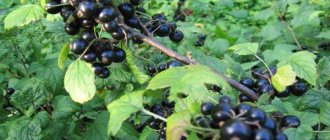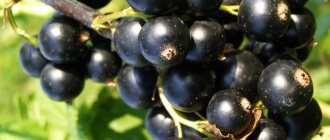Golden currant is an unpretentious crop that combines fertility and decorativeness. This interesting plant is not particularly popular among gardeners, and many even mistake it for a hybrid of currants and gooseberries. Let's learn as much as possible about this crop, how to plant it, how to care for it, and what uses it has.
How did Goldencurrant appear and spread?
Golden currant is an unpretentious and productive berry bush from the gooseberry family, which can be found in nature. Due to its bizarre leaves, golden currant is often confused with yoshta, a hybrid of gooseberries and currants. But this is a separate botanical species, native to North America. Here, shrubs have taken a liking to river banks and rocky slopes. In America and Canada, this plant is found in literally every garden.
Golden currants were brought to Russia at the end of the 19th century. For a long time it was not successful with gardeners, until I. Michurin took it up. The great breeder became the creator of the first variety - Crandall Seedling. He became the progenitor of most varieties of golden currants bred by Soviet breeders.
Thanks to Michurin varieties, a new type of currant spread throughout Russia. The biological characteristics of the plant made it possible to use it for various agricultural purposes. Being able to adapt perfectly to different conditions, the culture has spread to almost all climatic zones. Golden currants grow today, in addition to Russia, in Belarus, the Baltic states, Central Asia, the Czech Republic, and England.
Venus Golden
The fruits are indigo colored and medium in size. But the unexceptional parameters are more than compensated for by the taste: the pulp is very juicy, sweet, with a slight sourness. The peel is not thick, so the variety “sounds” great in jams and preserves. Also, Venus Golden is successfully prepared as a supply.
Related article:
Useful properties and contraindications of currant leaves
The variety is frost-resistant: lowering the temperature to -40°C is not harmful to it. The undemanding nature and simplicity of agricultural technology of this compact plant have earned the love of many gardeners.
Read also: How to plant currants in the fall
Description and characteristics
Golden currant is a perennial deciduous shrub that gets its name from its abundant blooms of golden-yellow flowers.
Botanical description
- Bush. Slightly branching, multi-stemmed, up to 2.5-3 m high. The central stem produces the most shoots. The branches are erect, length - 2.5 m. Under the weight of the berries, the branches bend to the ground. The color of the bark is red, there may be slight pubescence.
- Root system. Powerful, penetrates 2 m or more. In young shrubs - 50-60 cm. The rhizome also grows in the horizontal direction. The bulk of the roots are concentrated in the surface layer of soil, at a depth of approximately 30 cm.
- Leaves. They look like carved gooseberry leaves. Color – green, with three and five lobes, base – wedge-shaped. Leaf length – 5 cm.
- Fruit. Oval, round-oval or teardrop-shaped, mostly black. Diameter – up to 1 cm. The taste is reminiscent of blueberries. There are varieties with different colors of berries - burgundy, yellow or orange. Weight – 1.5-3 g. The skin is dense. The pulp is sweet and sour, with a nutmeg or blueberry aftertaste.
- Flowers. The diameter is 1.5 cm. One inflorescence consists of 5-15 flowers. The flower is yellow, tubular, the petals are small, and in the center there is a reddish or greenish corolla. The flowers exude a pleasant aroma.
Main characteristics:
- Flowering is long and abundant. Starts at the end of May. Lasts 10-20 days.
- Fruiting begins at 3 years of age. Shoots 5-7 years old are the most productive.
- The ripening period is medium-late (for most varieties). The berries ripen on the 35-45th day after flowering.
- Flowering is abundant, flowers attract honey insects. Bees collect almost a hundredweight of honey from 1 hectare of plantings.
- The culture is self-sterile. To get a harvest, three different varieties of golden currant are planted simultaneously.
- The yield is high - one bush produces from 5 to 15 kg of berries.
- The annual growth of shoots is 30-40 cm.
See the video below for a description of the “Golden” currant variety:
Popular varieties
There are many varieties of golden currants; there are dozens of them. The best ones are worth listing. All varieties described below are worthy of the attention of gardeners. They are disease resistant, early ripening, and provide berries in the most unfavorable seasons.
Muscat
A productive variety. One compact Muscat bush produces up to 7 kg of dark berries. The variety received its name for the nutmeg taste of the pulp. She's very sweet.
Shafrak
Medium late variety. It has a number of valuable qualities: drought-resistant, productive, heat-resistant. Does not suffer from pests and diseases. The berries are very juicy, large, weighing up to 4 g. The color is dark cherry, the shape is elongated.
Isabel
Ripening period: July 10-15. The weight of the berries is 2-2.5 g. The ripe skin is black, the taste is sweet and sour. The bush is tall, not spreading, the average yield of one plant is 4-6 kg.
Ermak
One bush produces from 3 to 5 kg of light black berries. They ripen on June 10-15. The pulp emits a light aroma and tastes sweet and sour. One weighs no more than 1.5 g.
Laysan
Fruiting is early. The berries are round, weighing from 1 to 3 g, collected in short clusters of 5-6 pieces. The shoots are long and the growth force is great. The bushes tolerate drought well and do not suffer from heat.
Kishmish
Winter-hardy variety. Productivity is stable and high. The bushes are medium-sized, the berries are medium-sized (0.9-1 g). The skin is strong and black. The bushes are compact. The Kishmish variety is resistant to fungal infection.
Amber
Bright orange, amber berries of the golden currant variety Sultry Mirage. Weight 1.3 g, taste refreshing and pleasant.
Yellow
Variety Zarina with round yellow berries (3.5 g). Pleasant sweet pulp. Indicators of resistance to low temperatures and drought are high.
Michurinskaya
Vigorous shrub with strong straight shoots. The leaves are medium in size and green in color. Three-lobed shape. Fruit weight is 1.3-2.5 g. Round shape, dark burgundy color. The pulp is sweet and sour with a fresh aroma. The variety is mid-season.
Chinese
A variety of golden currant. Bush with a developed root system, tall (2.4 m). Leaves are up to 5 cm long, three-lobed. The berries are elongated and store well.
Silver
The bushes are deciduous, about 2.4 m high, with few branches. The harvest ripens in July. The fruits weigh 1-1.5 g.
Siberian sun
The berries are medium size, yellow. The taste is refreshing, with a slight sourness. Harvest time comes at the end of July. The bushes are not afraid of frost and heat. They grow well in shade and sun.
Pearl
The bushes are of medium height, do not exceed 1 m. They winter well. Withstands frost down to -40 °C. The variety is mid-early in terms of ripening time. The harvest begins in June.
Caucasian
Breeders from the North Caucasus Research Institute have developed two forms of golden currant. Form A - bushes up to 2.5 m high, black berries with a sweet and sour taste, 1.5 cm in diameter. Form B - bushes up to 2 m high, brown berries, up to 1.2 cm in diameter, with a pleasant sweet and sour taste.
Venus
The variety is drought-resistant, heat-resistant, does not like return frosts, and the flowers suffer. They are collected in medium-sized inflorescences (4 cm). The berries ripen early, the variety is early ripening. The harvest is wavy (2-3 waves). The skin is black, shiny, the flesh is sweet and sour, juicy. The bushes are slightly spreading and vigorous.
A large selection of golden currant varieties, easy care, a stable harvest, abundant flowering, healthy berries - these are enough reasons to plant several bushes in your garden.
How to choose seedlings?
Choose a variety taking into account frost resistance and winter temperatures in your region. If planting is done in central Russia, choose varieties with frost resistance of minus 40 degrees.
Rules for choosing golden currant seedlings:
- The recommended age of seedlings is 2-3 years.
- The seedling should have 3-5 main roots, 20 cm long, and developed fibrous roots. There should be no dried or rotten roots, traces of diseases or pests.
- It is desirable that there are two shoots 30-40 cm long. The bush should be intact, without cuts or broken branches.
- Planting material that has been left in the sun all day is not suitable - the bushes may not take root.
- When transporting seedlings, wrap the roots with a damp cloth. If the ends of the roots are damaged during transportation, they are carefully trimmed.
It is advisable to buy seedlings only in special nurseries and centers engaged in the cultivation and sale of planting material.
How to grow a golden bush?
For an experienced gardener, it will not be difficult to plant and grow golden currants. The main thing is to choose good planting material and plant it correctly - you need to leave more space for the bushes, they are spreading and can grow 2 or more meters in width.
Suitable climate
All varieties of golden currants are suitable for central Russia and the southern regions. Problems for the crop arise at temperatures below 40 °C - if higher frosts hit, the bushes will freeze. But varietal currants easily tolerate the heat and drought of the southern regions.
Optimal timing
Golden currants are planted in autumn and spring. When planting in autumn, seedlings are planted from September to October, but no later than a month and a half before frost. In spring, currants are planted early - immediately after the soil thaws.
Site selection and landing scheme
Experts assure that golden currant is amazingly unpretentious - the plant is able to grow where no other type of currant can survive.
Features of site selection:
- Lighting. Any area is suitable - sunlit and shaded.
- Relief. Can be planted on a plain or on a slight slope. It is advisable to choose sites on the western or southwestern side. The best option is not the leeward side.
- Economic use. Suitable for areas that need a natural hedge. When planting near fences, retreat 1 m from the fence.
- Ecology. Suitable for polluted industrial areas and polluted cities.
- The soil. Grows on any soil - acidic and alkaline, dry and wet, sandy loam and loam. The main requirement is the location of groundwater no higher than 1 m from the surface.
Golden currant planting scheme:
- between adjacent pits - 1-1.5 m;
- between adjacent rows - 2.5-3 m.
Step-by-step planting instructions
Step-by-step instructions for planting golden currants:
- Level the ground, remove the weeds and dig the soil to the depth of the spade.
- Fertilize the soil 2-3 weeks before planting. Add per 1 sq. m 6-8 kg of compost and 30 g of potassium salt. Before digging up the soil for planting, wood ash is scattered around the area.
- Dig a hole 0.5 m wide and deep.
- Prepare and pour the soil mixture into the holes:
- humus – 1 part;
- fertile soil (top layer of soil removed when digging a hole) – 1 part;
- superphosphate – 200 g.
- You can also add nitroammophoska to the planting hole, after mixing it with fertile soil.
- Soak seedlings with bare roots in a bioactive solution for 2 hours, or in water for 2 days. Water seedlings with closed roots generously to make them easier to leave the containers.
- Place the seedling in the hole. Sprinkle the roots with the prepared soil mixture so that the root collar of the seedling is deepened by about 5 cm - this is necessary for the formation of adventitious roots.
- Place the seedling at an angle - this way it will better grow new roots. If you place it strictly vertically, new stems may not appear. Compact the soil by pressing down firmly on the soil near the trunk.
- Water the planted seedlings. A 3-year-old seedling needs 3-4 buckets of water.
- Trim the seedlings, leaving 5-6 buds.
It is recommended to plant golden currant seedlings in holes; if you plant them in trenches, their roots will adhere to each other.
The first berries on young bushes will appear next year.
Let's get acquainted
Golden currant will become a real decoration of the garden - during the flowering period, no one can compare with it in beauty!
This is the only currant that did not get its name from the color of the berries. It is precisely because of its dazzling yellow flowers that abundantly dot the bush that the species received its name.
Currant flowers have a bright, rich aroma that can be felt from afar.
- The middle of summer comes, and the delicate beauty finally bears fruit. And she is still beautiful. Its oval or round berries are very shiny and seem to glow in the sun. Multi-colored fruits can reach a weight of up to 3 grams.
The taste of golden currant berries may seem unusual to lovers of black currants.
They are denser and stronger (which, by the way, is very good for transportation). From the fruits of this beauty you can make delicious jams, preserves, jellies, desserts, fruit drinks and compotes.
Cool autumn will soon arrive. Powerful currant bush (golden currant can grow up to 2.5-3
m) is transformed again.
This time the bush changes the color of the leaves (some become purple, and on many leaves various variegated spots appear - yellow or red).
♦ Are there any disadvantages to golden currants? Golden currant bushes do not really favor wet weather - at such a time the beautiful fruits can crack, and the crop itself prolongs the ripening period of the berries.
This not very pleasant nuance is more than covered by the numerous advantages of the beauty: golden currants perfectly withstand any adversity: dust, smog, drought, heat, cold, smoke, disease and pest attacks.
- Even in particularly cold winters (when frosts drop below 30° C), although the currant freezes a little, it recovers completely and quickly.
What are the benefits of sunberry?
Golden currant is not as rich in vitamin C as its black-eyed sister. But golden currant berries store a lot of carotene (vitamin A).
The golden berry is ahead in quantity even of sweet peppers and apricots.
In addition to vitamins, the golden beauty contains a number of very useful substances for humans: pectin and tannins. The berry contains many acids important for the body, especially succinic, malic and citric.
What the fragrant beauty is especially rich in is its high content of coumarins.
These organic natural compounds help reduce the level of blood clotting (this ability is important for protection against the occurrence of heart attacks).
The berry is very useful for people with diabetes, because the fruit also contains insulin-like substances.
- The berries retain all their usefulness in any processed products.
Fruit drinks, juices and compotes made from golden currants are effective as refreshing and antipyretic agents.
Healthy drinks are able to remove harmful salts, waste, and toxins from the body, they improve appetite and perfectly increase performance.
And increased iron content is useful in the treatment of anemia (anemia). The berries also provide benefits for sclerosis and hypertension.
Attention! It is important! Young leaves and buds of golden currant are poisonous! They have hydrocyanic acid. It is strictly forbidden to make tea or any tinctures from them! This golden treasure has only its berries for food!
Principles and nuances of care
Caring for golden currants is not much different from growing other types of currants. The differences are mainly associated with the special endurance and undemanding nature of the plant.
Read the article about how to properly care for currants in the spring.
Watering
Young plants are watered once a week, but mature bushes do not need frequent watering. During the entire growing season, it is enough to water the currants 3-5 times. The main thing is to provide it with moisture during the period of fruit formation.
Water is poured into specially dug furrows, trying to prevent water from getting on the leaves. 1-2 buckets of water are poured under one young plant, 3-3.5 buckets under adult bushes. Large plantations are watered using the sprinkling method, adjusting the pressure to the desired value.
To harden the bushes and ensure their productivity in the future, currants are watered moderately before buds open and after the leaves fall. During periods of drought, the shrub is watered regularly so as not to lose yield.
Application of fertilizers
Golden currant is hardy and undemanding; it does not need frequent feeding. Humus placed in a hole during planting is enough for at least 2 years. In the third year, the bushes begin to be fed. A mixture of manure or bird droppings and complex mineral fertilizers is applied to the root furrow.
Currants are fed with nitrogen fertilizers in the spring, and in the fall they are fed with compost or humus. For 1 bush – 4 kg of organic fertilizer. Also add 120 g of superphosphate and 2 tsp. potassium sulfate. Or wood ash is added instead.
Digging row spacing
Row spacing is dug up in the fall. It must be carried out if the soils are heavy and dense. If the soils are light, it will be enough to loosen them well.
The soil near the crown is dug up to a depth of no more than 5 cm, otherwise the roots can be cut. Further from the crown they dig deeper - up to 10-15 cm.
You can learn about caring for currant bushes in the autumn from this article.
Weeding and loosening
Weeds are pulled out as needed. It is advisable to loosen the soil in tree trunk circles after each watering - fluffing the soil ensures the supply of oxygen to the root system. The row spacing is loosened twice – in spring and autumn.
Several times a season, the tree trunk circles are mulched with peat or sawdust. 5-6 years after planting there will be no need to weed the currants - the bushes will grow so much that there will be no need for it.
Forming a currant bush
Pruning is carried out in the spring, before the buds swell, or the currants are pruned in the fall - when the leaves fall. A full harvest is harvested 3-4 years after planting. This feature of the crop must be taken into account and the plant should not be pruned in the first year. It is recommended to carry out the first pruning in the second year of planting:
Shoots up to 5-6 years of age are productive. Principles of pruning:
- The weakest root shoots are removed so that the rest of the shoots grow and develop better. When the root shoots stop growing, this indicates a stop in natural rejuvenation - the bush begins to age quickly.
- In the spring, weak annual basal shoots growing near the trunk are cut out. They are cut to the ground. This is necessary to prevent thickening of the bush. More is written about pruning currants in spring here.
- Remove annual growth, leaving 4-5 strong branches. Removing growth helps rejuvenate the bush.
The next year, in May-June, the tops of the basal shoots are pinched so that branches are formed. From them, fruit-bearing branches are formed the next year.
A year later, formation continues similar to the previous year. Then sanitary pruning is carried out annually - diseased and dry branches are cut off. The bush will be fully formed by 4-5 years. It should consist of 17-25 main branches of different ages.
The first anti-aging pruning is carried out 12 years after planting.
Preventive treatment against pests and diseases
Golden currants are very resistant to diseases and pests, so preventive measures are usually sufficient for normal growth and fruiting. Principles and features of disease prevention:
- Before pruning and before sap flow, the bushes are watered with hot (80 °C) water. Water from a watering can with a “shower”. One bucket – for 2 bushes.
- Before the buds open, spray the bushes with Karbofos, Nitrophen 2%.
- When the green mass begins to grow, the bushes are treated with Fundazol. To enhance the effect, spray the plants with Bordeaux mixture (up to 2%).
- In autumn, after pruning, the ground near the trunks is treated with colloidal sulfur (1%) or Karbofos (2%).
- Regularly trim diseased and dry branches, collect and destroy old foliage.
Feeding and watering
Once you have seen currants bloom, you can understand why this species is used not only for harvesting, but also as a decorative element of landscape design that goes well with other plants, shrubs and trees.
A weakly branching bush must be fed with organic and mineral fertilizers no more than twice a year; before feeding, the area around the trunk must be loosened, and after applying fertilizers, the soil can be mulched, this will preserve its moisture.
How to propagate a culture?
There are no problems with the propagation of golden currants - the plant is easily propagated by any of the existing methods.
Methods of propagation of golden currant:
| Reproduction method | How to do it? |
| Seeds | This method is not recommended. Seedlings grown from seeds do not inherit varietal characteristics. |
| Cuttings |
|
| Dividing the bush | In spring or autumn, dig up a bush and divide the rhizome into several parts. The separated parts are planted in prepared pits. |
| By layering | In spring, two-year-old shoots are collected from the mother bush. A shoot is buried in the furrow, leaving a 20 cm top. Once fixed, it is grown until autumn, then replanted. |
Cuttings harvested in the fall for spring planting are “preserved” for the winter:
- Immerse the sections in melted paraffin.
- Wrap the branches with wet wipes and place them in film bags.
- Place the bundles under the snow until spring.
Golden currants, unlike red currants, are not propagated by vertical layering.
Currant propagation
Growing golden currant bushes on the site is quite simple; its cuttings take root well and take root without requiring special or special care; to preserve the characteristics of the variety, you can use the grafting method.
When choosing high-quality and viable seedlings, special attention must be paid to the well-developed root system and above-ground parts of the plant; in addition, an excellent propagation option is the formation of layering from the mother shrub already growing on the site.
Diseases and pests and their control
Usually golden currants do not get sick. If left uncared for, the plant can be affected by rust, septoria, gray rot and other berry diseases. The most common pests that attack currants are aphids and spider mites.
| Diseases/pests | Symptoms/Harms | How to fight? |
| Powdery mildew | A fungal disease is accompanied by the appearance of a powdery coating. The bushes do not develop and do not bear fruit. | Before the buds open, spray the plants and soil with 3% Nitrafen. |
| Anthracnose | There are brown spots on the leaves. The leaves dry out and fall off. | Spraying with Nitrafen and colloidal sulfur 1% - after flowering. |
| Septoria | The leaves are covered with small white spots and have a brown border around them. The leaves are falling off. | Similar to the treatment of anthracnose. |
| Aphid | The shoots are deformed, the leaves curl, and the growth of the bush is inhibited. | Treatment before flowering with insecticides based on Pirimiphos-methyl. Or treated with Karbofos. |
| Spider mite | The leaves dry out and the berries ripen late. The leaves turn brown in May, then become whitish. | Spray with 50% Karbofos. Sulfur preparations or garlic infusion are also used. |
| Currant bud mite | The buds become swollen, the apical leaves curl. | Treated with colloidal sulfur during the flowering period. |
Application
Golden currants, unlike red and black ones, are planted not only for their berries, but also for decorative purposes. This universal plant produces 4-6 kg of fruit per bush, decorates and fences the area, and does not require special care.
As a fruit and berry crop
In Russia, growing golden currants has not yet gained such popularity as in its homeland - America. This crop, unlike black currants, is not a carrier of the main berry scourge - powdery mildew.
Its fruits are not rich in vitamin C, but contain little acid and a lot of carotene. Juice, compote, jam, wine, liqueur are prepared from the berries. The fruits can be frozen and used as a filling for baked goods.
Golden currants have less acid than black currants, but they contain more sugar, carotene and some other useful substances, and in terms of vitamin B content they are many times ahead of their competitors.
Use in landscape design
The plant is valued for its decorative value. The shrub is especially beautiful during the flowering period. When currants fade, they do not lose their decorative properties. But it is especially beautiful in the fall - the bushes become multi-colored, green, yellow, and crimson. Golden currant is an excellent material for hedges. The plant can be grown in standard form.
Muscat
A variety that has received many awards and excellent reviews from experts. The main parameter is very large berries with incredible taste. The name was received for the characteristic nutmeg aroma. Each bush grows with a spreading crown, so Muscat is suitable for gardens with sufficient free space.
Related article:
How to protect currants from mites
The taste is very pleasant, but what is most appreciated is the excellent transportability of the berries: they do not crack or wrinkle even after reaching ripeness. But in the jam you can feel the thick skin. Most often, Muscat is used fresh and for freezing.
Advantages and disadvantages
Advantages:
- Undemanding, disease and pest resistant.
- Frost resistance - the plant can withstand frosts of 30 degrees and even more. Frost usually affects only the very tops of the shoots.
- Heat and drought resistance. Leaves are not damaged at temperatures of 40-42 °C.
- Resistant to temperature changes.
- Flowering begins late, after the risk of return frosts.
- Capable of growing on any soil. Grows well in any area, including steep slopes.
- High yield.
Flaws:
- Due to lack of moisture or nutrition, the ovaries may crumble.
- Wet separation of fruits.
- Fruits crack when overripe and at high humidity.
- Young leaves contain glycoside, a derivative of hydrocyanic acid. Because of this, the leaves should not be used to brew tea.
- Often young shoots do not finish growing season before the onset of frost, and therefore freeze slightly.
Tricks of agricultural technology
It is best to plant golden currants in autumn or very early spring (but with the condition that sudden frosts do not occur).
The growing season for the crop lasts from April to September.
- Ideally, golden currant varieties should be planted before sap flow or after it ends.
Golden currant seedlings, which are sold from nurseries in pots (they have a closed root system), can be planted at any convenient time (spring-autumn).
Buy young plants with developed shoots (there should be at least 3-4 of them) and a strong root system.
♦ Where to plant. Choose a place for the beauty with good lighting (but a little partial shade will not harm her). The shrub can take root well on slopes or on the plain.
Growing currants is completely uncomplicated - after all, the golden treasure does not impose any special conditions on the soil. It grows quietly on poor, meager lands.
♦ Planting. Before planting, prepare holes 50 x 60 cm. They must be filled with rotted manure or compost, and a glass of superphosphate or ash should be mixed into them.
Young (2-3 year old) seedlings are planted according to a 2.4 x 1 m pattern. In this case, the root collar of the bush should be deepened by 6-7 cm.
This will speed up the appearance of adventitious roots and stimulate the growth of shoots.
♦ We take care. Caring for golden currants is completely simple. Every year, dig up the soil between the rows, apply fertilizers on time (we fertilize them, like other types of currants), trim the branches and, if necessary, water.
- The branches that are pruned are those that help thicken the bush and prevent the sun from penetrating into the middle of the plant. Also remove diseased and dried shoots that are more than 3 years old. Golden currant varieties produce fewer berries on older branches.
If a young currant has grown too much, it needs to be thinned out (cut out all unnecessary young growth).
The crop should be pruned either in the spring (before the buds swell) or in the fall (after the end of leaf fall).
There is often no need to water the crop (in some cases, rain will be enough). After all, golden currants are drought-resistant.
Water it only if the period is too dry, also during the ripening of the berries.
This is such a wonderful berry - golden currant! Let me also remind you why it is so good and why you should definitely have it in your garden:
- Incredibly impressive and beautiful, capable of decorating a personal plot.
- Practically does not get sick and is not damaged by pests.
- Grows on any soil, except heavily clayey and damp.
- It has very fragrant flowers and is an excellent honey plant.
- Frost-resistant, drought-resistant, unpretentious.
- Can be used as a hedge.
- Very high-yielding, and from summer until frost, when other berries no longer bear fruit.
- The berries are strong and sweeter than other currants.
See you soon, dear readers!
Reviews about Golden currant
★★★★★
Maria R., 54 years old, amateur gardener, Moscow region. I planted two varieties - Venus and Shafak.
I noticed that it grows better in areas without drafts. Although it is unpretentious, it can lose a lot of ovaries due to the wind. The bushes are powerful, bloom profusely, and tolerate frosts - up to 40 degrees. ★★★★★
Valentin O., 58 years old, summer resident, Voronezh region. A neighbor in the country gave me this currant.
I didn’t even know before that this was some kind of special currant, I thought it was a hybrid. The good thing is that you don’t need to water - and it grows like that. I found out from a neighbor that it was Isabella. I don't really like the taste. Still, the aroma of black currant cannot be replaced by anything, but as a fence it is an excellent purchase. ★☆☆☆☆
Olga.
Perm I cut off a branch of golden currant and made three cuttings; everything has taken root, grows and bears fruit. I don't know what variety. It's news to me that she is self-sterile. The neighbor has only one variety. Fruits abundantly every year. What then is it pollinated by? Currants? Gooseberries?
★★★★★
Saratov
Not a currant - a FAIRY TALE. Yes, the smell is different, but the jam and compotes made from it..!!! Very grateful beautiful bushes from spring to autumn, both in flowers and in fruits.
Hide
Add your review
Surely the popularity of golden currants is yet to come. It will certainly appeal to “lazy” summer residents - care for this universal crop is minimal, it can easily survive the most severe drought and almost never gets sick. But if, in addition to being decorative, you expect to get a harvest of large berries from the plant, you will have to pay a little attention to it.
0
0
Copy link
Laysan
Medium-sized shrub with a compact crown. The outer branches almost never bend towards the ground, due to which the berries remain clean and beautiful even after rains. During rapid flowering, Laysan attracts a huge number of pollinating insects to the garden, since it has a very strong aroma.
An adult bush produces many fruits every year. They have a pronounced sweetness in taste and only slightly sourness. Since the crown tends to thicken, this can prevent sunlight from penetrating deep into the bush. To ensure a harvest with high taste characteristics, you need to prune annually.
Related article:
Caring for currants after harvest

